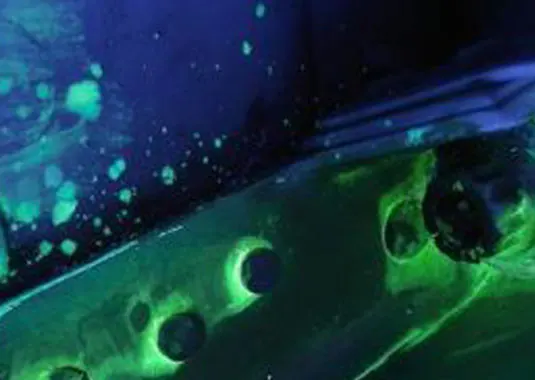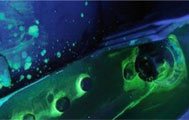
NON-DESTRUCTIVE TESTING WITH PENETRANT LIQUIDS
Non-destructive testing with penetrant liquids (Penetrant Testing) is one of the most traditional methods of analysis used by the general industry to highlight surface discontinuities on any metal material with reduced porosity and surface roughness.
It is a superficial method. This means that with PTs it is possible to inspect the cortical state of the component and identify defects that lie on the surface, even at a certain depth, but which are emerging.
The Liquid Penetrants method allows to quickly and reliably highlight open discontinuities on the surface (cracks, porosity, folds, tears, fatigue and heat treatment cracks, etc.) on different types of metal materials, even with complex geometries.
The physical principle on which the penetrating liquid method is based is linked to the ability of some materials to penetrate inside very narrow cavities, as are generally the typical discontinuities of metallurgy (cracks, gluing, porosity, etc.). This is made possible thanks to some physical peculiarities that these substances must have such as low surface tension, good capillarity or good wetting power.
Penetrant liquids can be used with different inspection techniques depending on the sensitivity required. At Punto Netto, for example, we use color contrast and fluorescent penetrants according to the inspection procedures to be used and the standard requirements to be adopted.
THE ADVANTAGES OF A PENETRANT LIQUID TESTING
As mentioned, one of the advantages of non-destructive testing carried out with the liquid penetrant method is its applicability on any metal component even with remarkably complex geometries. The identification of relevant anomalies, compared to other methods, is immediate to be defined for 2nd level certified personnel such as Punto Netto. Another advantage is given by the cost which can be very low if you rely on qualified personnel equipped with portable inspection kits. Finally, thanks to a control with penetrating liquids, the interpretation of defects is relatively simple.
THE DISADVANTAGES OF A PENETRANT LIQUID TESTING
Like any method applied to non-destructive testing, even Penetrant Testing has some disadvantages. First of all it is not suitable if you want to identify internal defects that do not appear on the surface. It is not a method that is well suited to components that have surfaces that are too rough or porous, painted or treated with oxides and galvanic protections. Finally, the indication provided by the penetrating liquids does not allow to evaluate the depth of the defect itself.
THE PHASES OF A NON-DESTRUCTIVE TESTING WITH PENETRANT LIQUIDS
The phases of a penetrating liquids testing are many
1) It starts with the preparation of the surface
2) Continue with the application of the penetrant
3) The excess penetrant is then removed through water or solvents
4) The inspected surface is then dried
5) The detector is applied which brings the penetrant to the surface
6) We then arrive at the observation of the indications that emerged
7) Finally, any defects are recorded and the final cleaning is carried out
THE APPLICATION FIELDS OF A PENETRANT LIQUIDS TESTING
Non-destructive testing carried out with Penetrant Testing can be applied, for example, to highlight any non-conformities in fusion welds and forgings, on sheet metal and machined items, but also in common castings and on pipes with or without welds
WHEN A PENETRANT LIQUIDS TESTING IS CARRIED OUT
All those components which, due to their manufacturing or service cycle, may present surface discontinuities, can be inspected through the penetrating liquids. The NDT with penetrating liquids, therefore, is able to identify, for example, fusion welds just made or in the maintenance phase, components machined by machine tools whose defect is generated by the tool itself, any presence of surface cracks, peeling and splitting in the sheets or the presence of cracks and folds in the forged components.
REFERENCE STANDARDS
The reference standards that govern the world of Penetrant Liquids within the General Industry, and to which the qualified and certified 2nd Level Point Netto technicians apply, are as follows:
• Standard for the certification of personnel assigned to Non-Destructive Testing:
UNI EN ISO 9712
• Method general standard:
UNI EN ISO 3452-1/2/3/4
• Product standards:
UNI EN 10228-2 (PT control of forgings)
UNI EN 1371-1 (sand castings)
UNI EN 1371-2 (lost wax castings)
• Acceptance rules:
UNI EN ISO 23277 (PT control of welds)
UNI EN 10228-2 (PT control of forgings)
UNI EN 1371-1 (sand castings)
UNI EN 1371-2 (lost wax castings)



 Among the many services provided by Equity Point stand out the non-destructive testing, with Penetrating liquids, Ultrasound and Magnetic Particle.
Among the many services provided by Equity Point stand out the non-destructive testing, with Penetrating liquids, Ultrasound and Magnetic Particle.



































